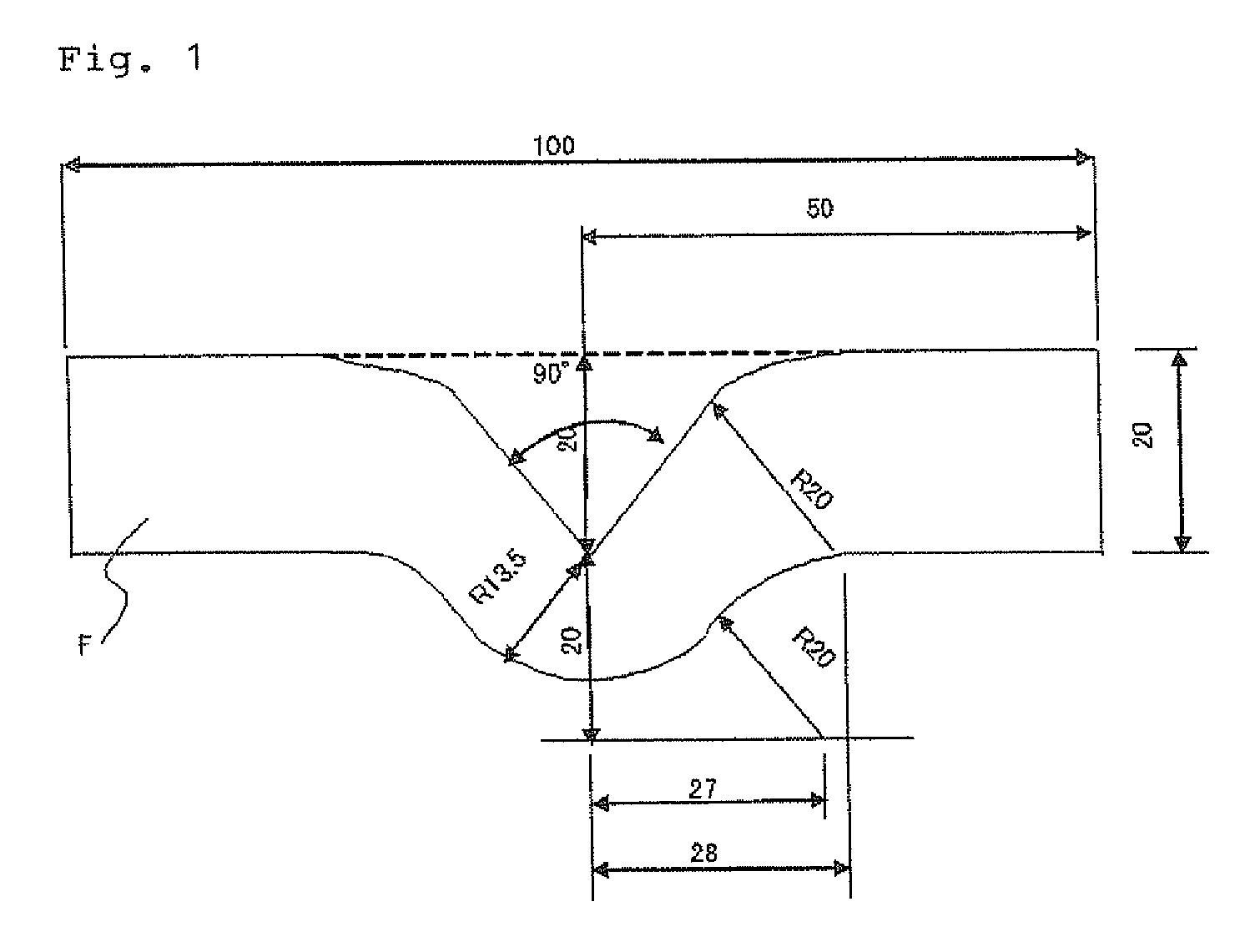Heat-shrinkable polyester film and process for production thereof
a polyester film, heat-shrinkable technology, applied in the direction of packaging, synthetic resin layered products, etc., can solve the problems of label separation from a container, low heat resistance, and problems of polyvinyl chloride films, and achieve high shrinkability in the longitudinal direction that is the main shrinkage direction, good perforated line openability, and high mechanical strength
- Summary
- Abstract
- Description
- Claims
- Application Information
AI Technical Summary
Benefits of technology
Problems solved by technology
Method used
Image
Examples
example 1
[0102]Polyester 1 and polyester 2 as described above were mixed in the weight ratio 90:10 and the resulting material was introduced into an extruder. Thereafter, the mixed resin was molten at 280° C. and extruded from a T-die and then quenched by winding it around a rotating metal roll set at a surface temperature of 30° C. An unstretched film with a thickness of 360 μm was obtained. The take-off speed (rotational speed of the metal roll) of the unstretched film at this time was about 20 m / min. Moreover, the Tg of the unstretched film was 67° C. Thereafter, the unstretched film was led to a tenter (first tenter) in which a transverse stretching zone, an intermediate zone and an intermediate heat treatment zone were continuously disposed. In the tenter, the length of the intermediate zone located intermediately between the transverse stretching zone and the intermediate heat treatment zone was set at about 40 cm. Additionally, in the intermediate zone, when a strip of paper was hung ...
example 2
[0106]A heat-shrinkable film was continuously produced by a method similar to the method of Example 1 with the exception that polyester 1 and polyester 2 were mixed in the weight ratio 70:30 and then the resulting material was introduced into an extruder. Then, the properties of the resulting film were evaluated by methods similar to the methods of Example 1. The evaluation results are shown in Table 3.
example 3
[0107]A heat-shrinkable film was continuously produced by a method similar to the method of Example 1 with the exception that the stretch ratio in the transverse direction in the tenter (first tenter) was changed to 5.0 times.
The thickness of the biaxially stretched heat-shrinkable polyester film was about 24 μm. Then, the properties of the resulting film were evaluated by methods similar to the methods of Example 1. The evaluation results are shown in Table 3.
PUM
| Property | Measurement | Unit |
|---|---|---|
| shrinkage ratio | aaaaa | aaaaa |
| shrinkage ratio | aaaaa | aaaaa |
| shrinkage ratio | aaaaa | aaaaa |
Abstract
Description
Claims
Application Information
 Login to View More
Login to View More - R&D
- Intellectual Property
- Life Sciences
- Materials
- Tech Scout
- Unparalleled Data Quality
- Higher Quality Content
- 60% Fewer Hallucinations
Browse by: Latest US Patents, China's latest patents, Technical Efficacy Thesaurus, Application Domain, Technology Topic, Popular Technical Reports.
© 2025 PatSnap. All rights reserved.Legal|Privacy policy|Modern Slavery Act Transparency Statement|Sitemap|About US| Contact US: help@patsnap.com

